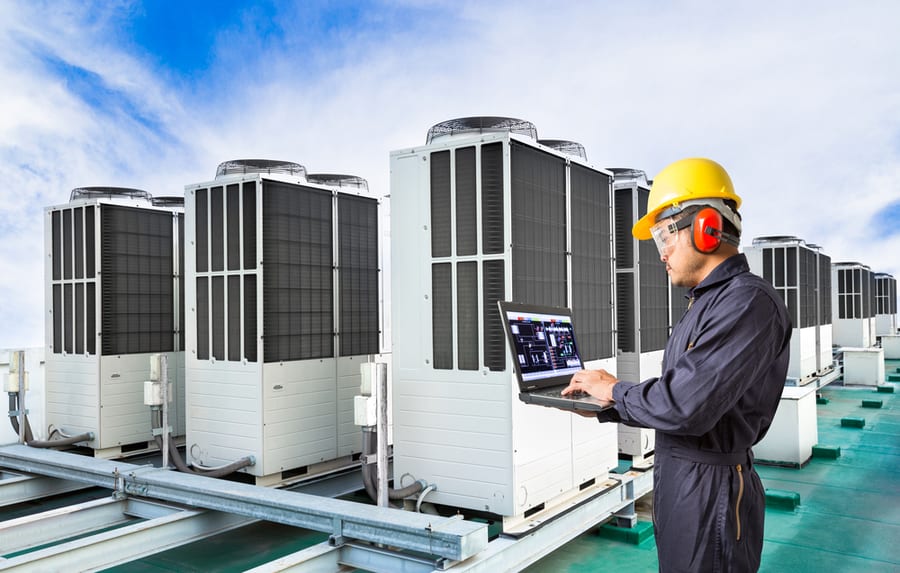
Air conditioning is essential to modern life, keeping us cool and comfortable in hot weather. However, have you ever wondered how cool air comes out of your air conditioning unit on a blazing hot day? Is it magic?
No. It is the result of a complex system working together. It has several interesting components that make it happen.
Therefore, let’s dive in and understand the science behind this amazing invention!
An air conditioning unit uses a refrigerant to absorb heat from the air inside a building and transfer it outside. The process is achieved through four main components of the air conditioning system.
- The Evaporator.
- The Compressor.
- The Condenser.
- The Expansion Valve.
These components evaporate, compress, and condense the refrigerant and send it to the expansion valve, which repeats the cycle till the air indoors is cool.
In this article, we will take a closer look at how an air conditioning unit works and learn about the functionality and purpose of its different components. We will also learn about the different types of air conditioning units available to fulfill your requirements.
How an Air Conditioning Unit Works

The Basic Principle
The basic idea behind an air conditioning system is to remove heat from the air inside a building and transfer it to the outside air. This is done by passing the indoor air over a cold coil or refrigerant, which absorbs the heat and transfers it to a condenser unit outside the building. The cooled air is circulated back into the building while the heat is expelled.
To better understand the working of an air conditioning system, you must look into its components and their function. These components and their role will clarify the working of an air conditioner.
The Components

An air conditioning unit comprises several components that work together to cool and dehumidify the air in a room or a building. These include:
- Refrigerant: Refrigerant is the substance used to transfer heat from the inside of the building to the outside. It is a crucial component of the air conditioning system and must be carefully monitored and managed to ensure efficient operation.
- Evaporator: It is located inside the building and is responsible for absorbing heat from the air in the room. This is done by blowing air over the evaporator coils, containing refrigerant in a low-pressure state.
- Condenser Unit: The condenser is located outside the building and is responsible for releasing the heat from the refrigerant. This is done by blowing air over the condenser coils, which contain the refrigerant that is in a high-pressure state.
- Compressor: This is the heart of the air conditioning system. It is responsible for compressing and pumping refrigerant throughout the system.
- Thermostat: The thermostat is responsible for controlling the temperature in the building. It is typically located in a central location and is used to regulate the operation of the air conditioning system by turning it on and off as needed.
- Ducts: Ducts are used to distribute the cooled air throughout the building. They are typically made of metal or fiberglass and are designed to be airtight to minimize the loss of cooled air.
- Expansion Valve: The expansion valve controls refrigerant flow from the system’s high-pressure side to the low-pressure side. This helps to regulate the temperature in the system and maintain efficient operation.
The Operation
An air conditioning unit uses refrigerant, a chemical substance responsible for cooling, to absorb heat from the air inside a building and transfer it to the outside air. Four main processes happen with the help of its components to make an air conditioning system work. These four processes recurringly happen to operate the air conditioning system successfully.
Here is how an air conditioning unit operates.
1. Evaporation

This process happens via an evaporator which is responsible for turning the liquid refrigerant into gas. The evaporator is located outside the building and is responsible for absorbing heat from the air.
A fan pulls in hot and humid air from the room and blows it over the cold coils of the evaporator. The refrigerant inside the evaporator absorbs the heat from the air and evaporates into a gas.
2. Compression
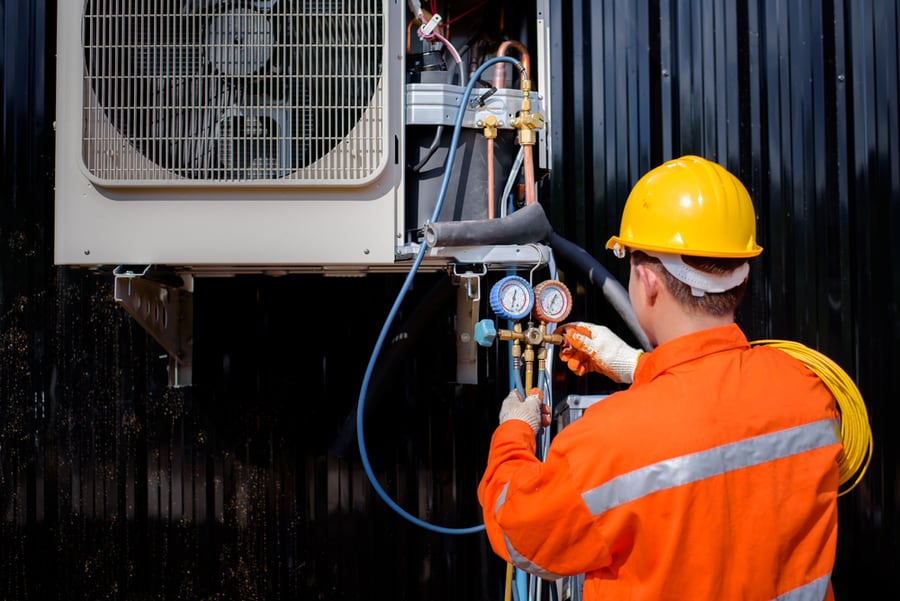
Compression happens via the compressor of the air conditioning unit. It is located outside the building. The compressor compresses the evaporated refrigerant and pumps it into the condenser.
3. Condensation
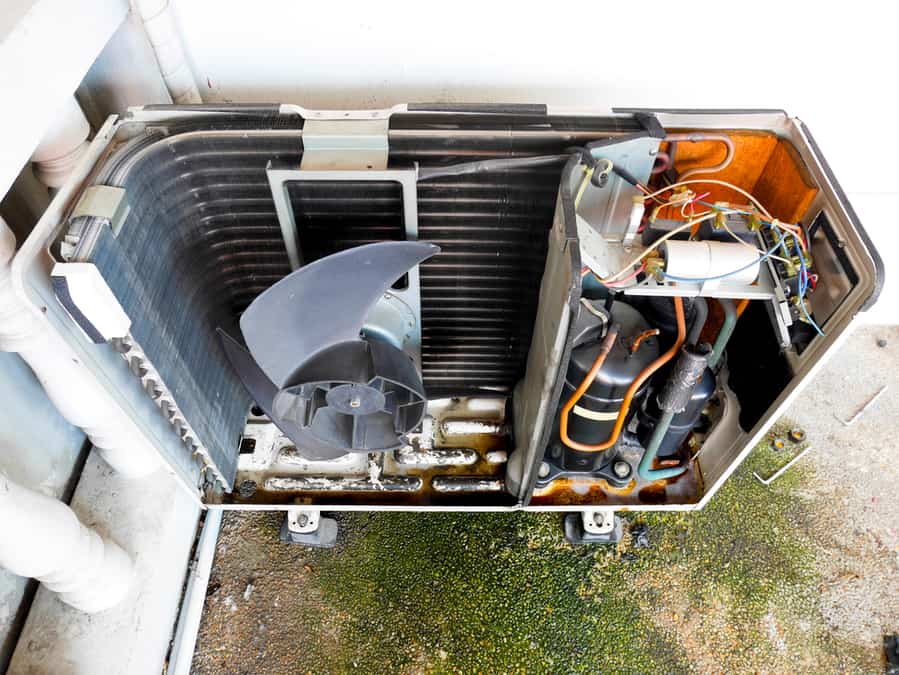
The condenser, which is also placed outside the building, releases the heat absorbed from the inside of the building into the outside air. The refrigerant gas condenses back into liquid form.
4. Expansion

Finally, the expansion valve regulates the pressure of the refrigerant and controls the flow from the condenser to the evaporator, allowing it to absorb heat from the air inside the building once again.
This cycle continues as long as the air conditioning unit is in operation, constantly removing heat from the air inside the building and releasing it outside. The process repeats until the inside air is cooled to the thermostat’s set temperature.
Types of Air Conditioning Systems
1. Central Air Conditioning System
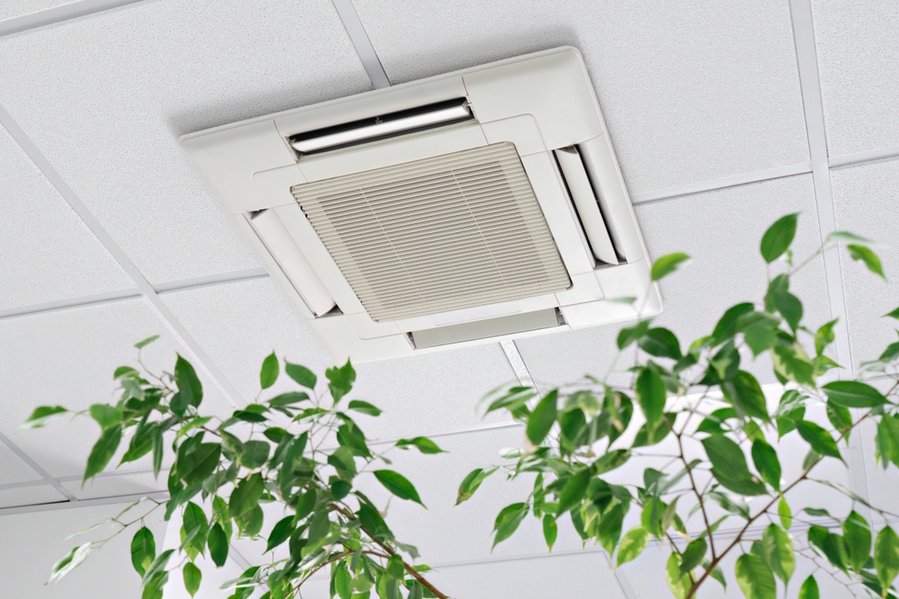
A central air conditioning system is the most common type of air conditioning system and is typically found in large buildings and homes. This system consists of an outdoor unit that houses the compressor and condenser and an indoor unit that circulates cool air throughout the building.
Central air conditioning systems cool the entire building by circulating refrigerant through a network of ducts. This type of system is highly efficient and provides a constant flow of cool air to all parts of the building.
2. Split Air Conditioning System
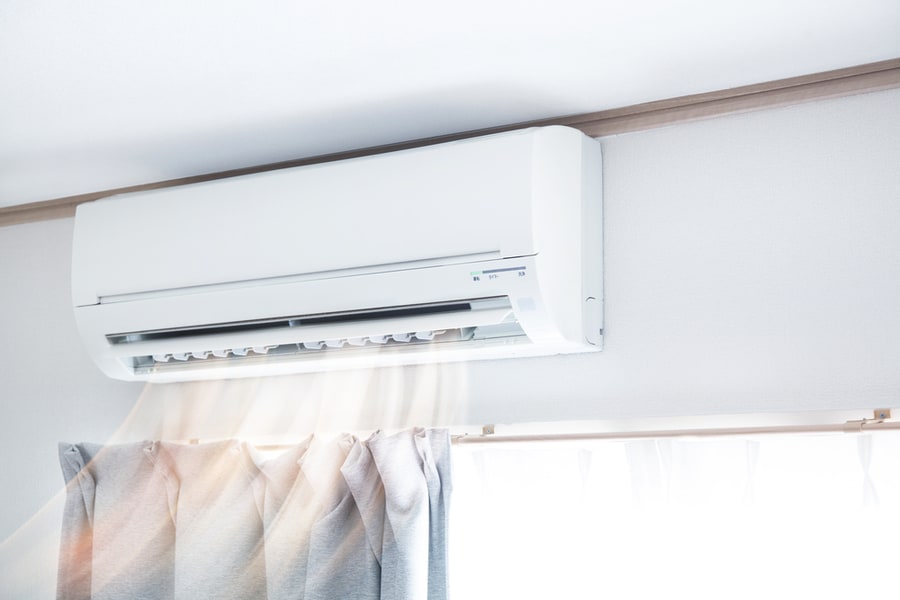
A split air conditioning system is similar to a central air conditioning system but is more suitable for smaller buildings and homes. This system consists of two units, one indoor and one outdoor, that are connected by a series of pipes and cables.
The indoor unit is usually mounted on a wall and circulates cool air throughout the room. The indoor unit contains the evaporator coil and a fan, while the outdoor unit envelopes the compressor and condenser.
3. Window Air Conditioning System

A window air conditioning unit is the simplest and most affordable type of air conditioning system. This system consists of a single unit installed in a window or a hole in the wall. It contains all the components of a split air conditioning system but on a smaller scale.
The indoor unit houses the evaporator coil and the fan that blows cool air, and the outdoor unit consists of the compressor and the condenser. This system is ideal for small rooms and relatively easy to install.
4. Portable Air Conditioning System
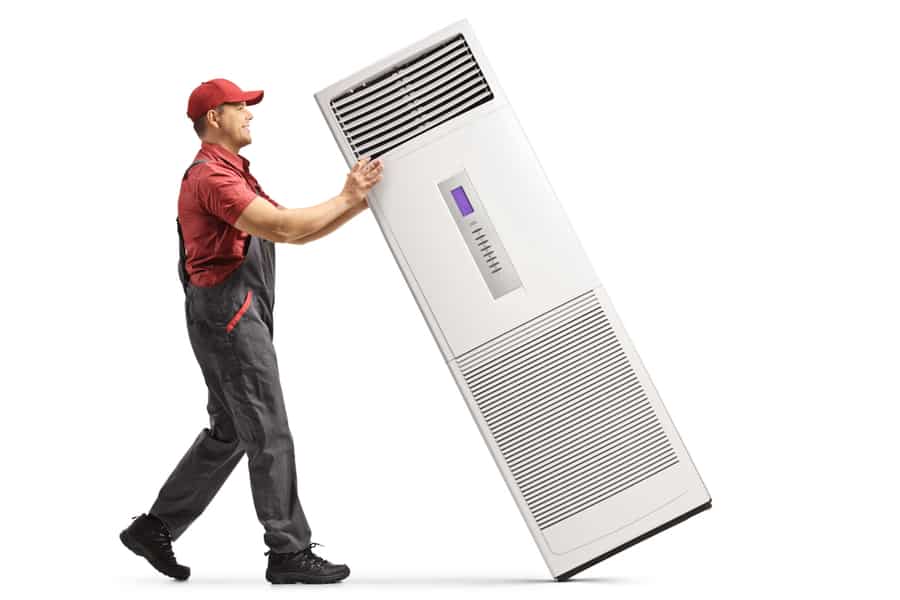
A portable air conditioning unit is a mobile air conditioning system that can be moved from one room to another. As the name indicates, it is convenient for mobile use.
This type of system is ideal for people living in rented apartments or homes where it is impossible to install a permanent air conditioning system. The unit can be easily moved from room to room and provides cool air wherever it is needed.
5. Ductless Mini-Split Air Conditioning System

A ductless mini-split air conditioning unit is a type of air conditioning system that does not require ductwork. This system consists of a small outdoor unit and one or more indoor units that are connected by a small conduit.
This type of system is ideal for people who want to control the temperature in different rooms without installing ductwork.
Conclusion
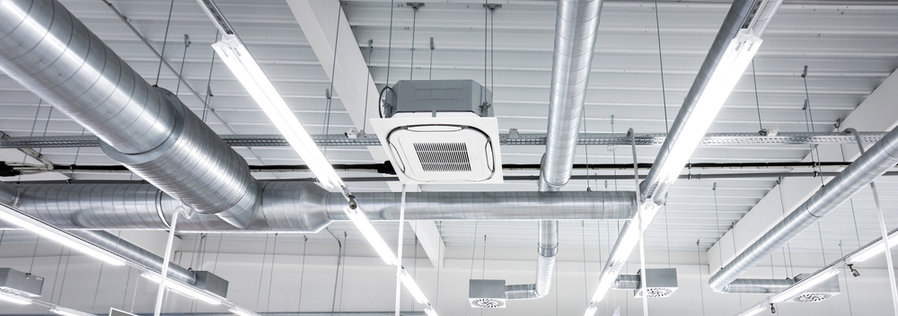
Air conditioning systems are a necessity for people living in hot climates. By removing heat from the indoor air and transferring it to the outside air, air conditioning systems provide a refreshing escape from the heat.
Understanding how air conditioning systems work can help you make informed decisions about your own air conditioning needs, whether choosing the right type of air conditioning system for your home or ensuring your existing system is running efficiently.
Enjoy the cool air!
Frequently Asked Questions
What Are Inverter AC Units?
Inverter air conditioning units are an advanced form of air conditioning system because they cool the room faster and maintain the set temperature without fluctuations.
They perform better and consume less power, saving 40% or more energy. In addition, they are durable and last longer but are just as expensive.
What Is a Humidistat?
Some air conditioners have a humidity monitor called a humidistat. This lets you control the humidity level in your room through your air conditioning unit.
Humidistat keeps the humidity levels of your house in check to prevent mold growth and other humidity-related problems.












